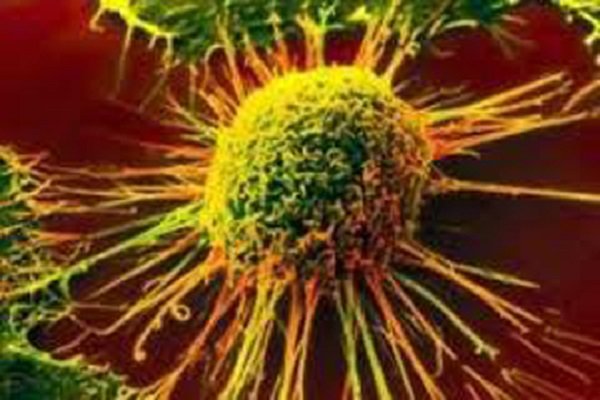Some 112,000 Iranians develop cancer annually: health official

TEHRAN – While some 112,000 Iranians are diagnosed with cancer annually, the disease could be the cause of over 80 percent of deaths in the country by the next 15 years, the head of cancer department at the Ministry of Health has said.
Cancer is increased in Iran by a rate of 177 per 100,000 and 140 per 100,000 among males and females, respectively, Ali Motlaq said, IRNA reported on Monday.
Stomach, bladder and prostate cancers account for most common cases among Iranian men, while the most commonly diagnosed cancers among women are breast, colorectal, stomach, and thyroid, he stated.
Referring to a rate of 15 to 20 percent fruit and vegetable consumption among Iranians, he counted unhealthy diet, tobacco use, alcohol use, physical inactivity and low fruit and vegetable intake as other major cancer risk factors.
He further noted that other causes of cancer can be related to environmental conditions such as air pollution, over 115 micrograms of airborne dust particles in cities with the population of more than 100,000, and fossil fuels.
Aging a fundamental factor for developing cancer
The incidence of cancer rises dramatically with age and life expectancy rate, Motlaq said, adding, “currently, average life expectancy in Iran has reached up to 74 years compared to the world’s rate of 71 years, which can increase the incidence of cancer in Iran above the global average”.
60% of Iranians physically inactive
He went on to say that physical inactivity in the country affects about 60 percent of the population.
Also, more than 60 percent of the people are suffering obesity and some 25 percent have high cholesterol due to physical inactivity, he regretted.
Comprehensive National Cancer Control Program in Iran
Motlaq explained that Comprehensive National Cancer Control Program (CNCCP) will be fully implemented by the Iranian calendar year 1400 (March 2021-March 2022), which pivots on multi-dimensional approaches to cancer, including prevention, early diagnosis, effective treatment, and palliative care programs, which are integral parts of preventing cancer and providing an appropriate care for cancer patients.
According to Oxford Academic website CNCCP was designed and approved by the Nutrition and Health Group of the Academy of Medical Sciences of Iran in early 2007; manager’s council in the Ministry of Health approved this program in January 2007.
Increasing public awareness is essential
Motlaq also noted that one of the other solutions to combat cancer in the country is raising public awareness and interventions to control the disease.
In this regard the ministry’s secretariat of supreme council for health is tasked with bolstering cooperation between related organizations to increase public awareness, by producing TV shows and launching campaigns, he added.
“Some 40 percent of cancers can currently be prevented by avoiding risk factors and more than 80 percent of cancers have a high chance of cure if diagnosed early and treated appropriately,” he concluded.
On July 2 Maryam Hazrati deputy health minister for nursing said that some 82 percent of deaths in Iran are linked with the main types of non-communicable diseases (NCDs) including cardiovascular diseases (like heart attacks and stroke), cancers, chronic respiratory diseases (such as chronic obstructive pulmonary disease and asthma) and diabetes.
According to World Health Organization (WHO), cancer is the second leading cause of death globally, and was responsible for 8.8 million deaths in 2015. Approximately 70% of deaths from cancer occur in low- and middle-income countries.
FB/MQ/MG
Leave a Comment